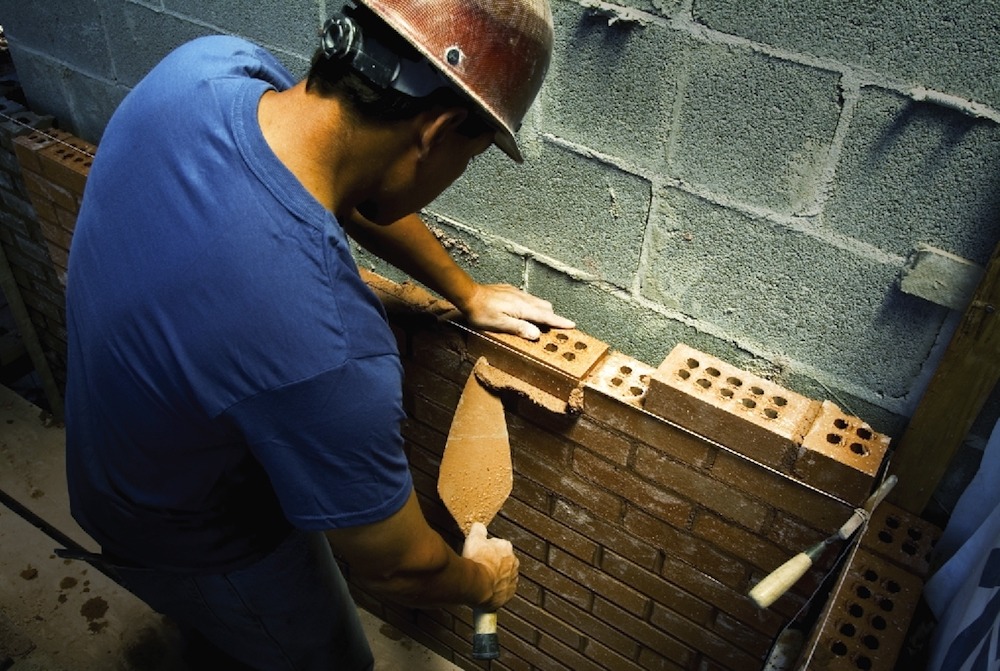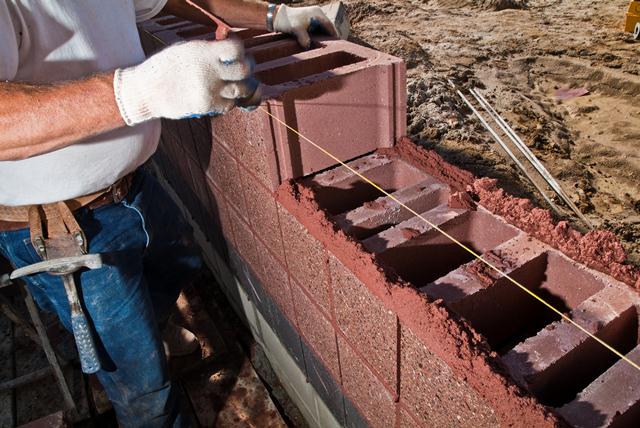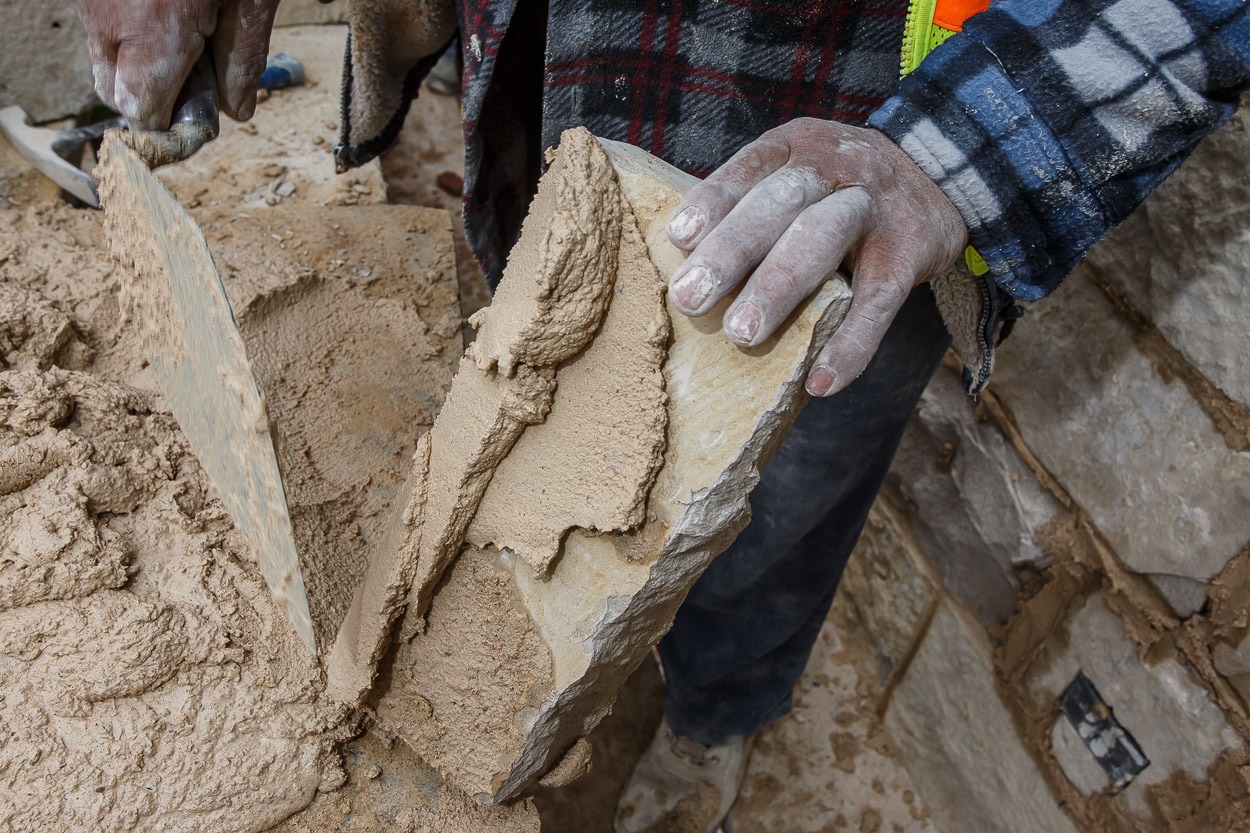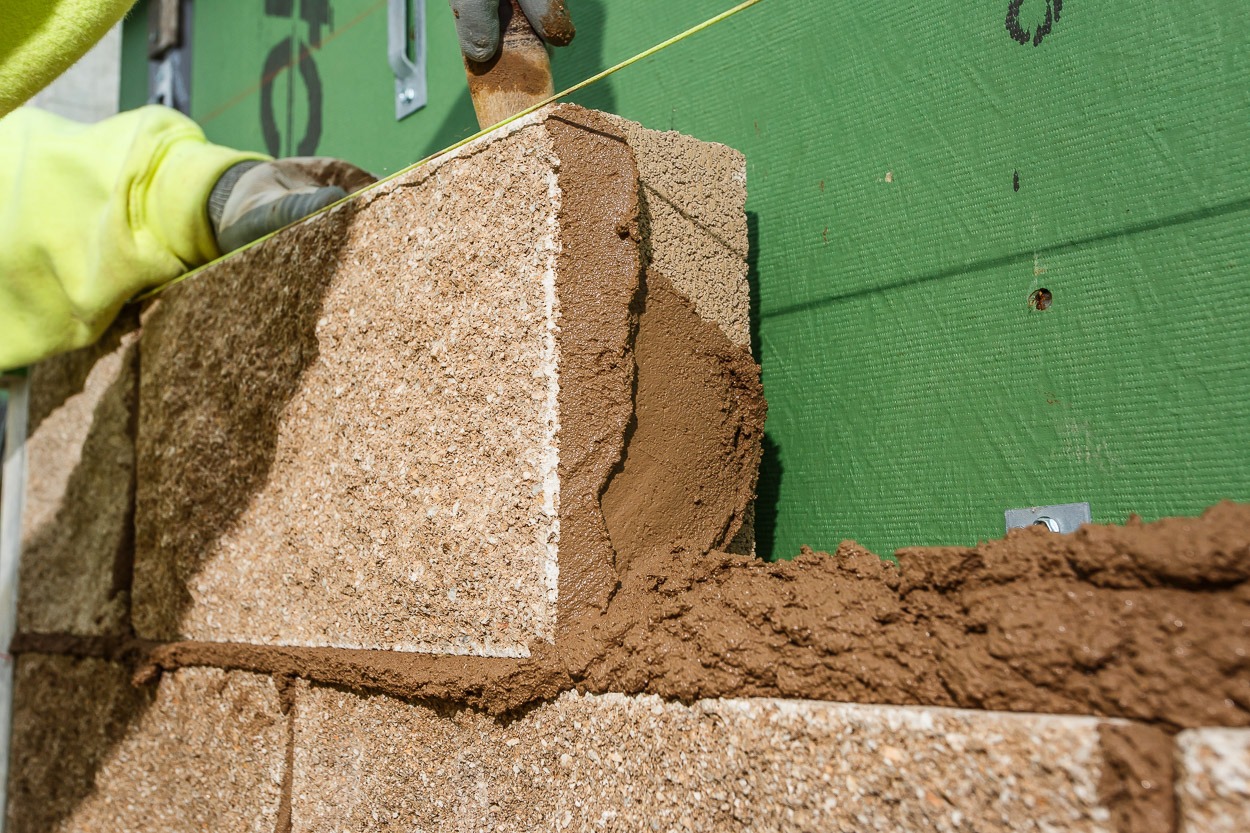From the color of your truck, your house and your jacket to the color of tools, pills, buildings, dishes and product packaging, there’s a concerted effort to attract your attention, your approval, and yes, your money, through the use of color. Without looking at a logo or reading the company name, most stone masons and lots of regular folks can accurately identify, just from the color, a John Deere brand tractor, a DEWALT tool case, UPS or FedEx truck, can of Coca-Cola or Tiffany’s box. The latter is its own trademarked robin’s egg shade of blue.
Color is a powerful branding mechanism, as well as a delight to the eye in the natural world. It is, of course, from the natural world that pigments come. The earliest red dye, red ochre, is found in iron rich soil and can be safely blended with other colors. In the 1500s, the Spanish explorers discovered brilliant red in the Aztec civilization which came from cochineal insects, “true” bugs, according to entomologists, not beetles.
They make their homes in prickly pear cacti found in Mexico and a few other places, and once discovered, the potent red dye was the third most popular export from the “New World”, behind gold and silver. Unlike many colors developed across the centuries, cochineal bug powder is not toxic and used prolifically still in lipstick and blush. There is speculation that Napoleon died from having Scheele’s Green (the most poisonous pigment) in his bedroom decor. Famous Impressionist painters Monet and Cézanne suffered, respectively, from blindness and diabetes. There is much conjecture in the art world that Paris Green, which had less arsenic in it than Scheele’s Green, caused both conditions.
Fast forward to the 21st century, and color has not only entered the mortar industry, but also raised it to the level of the paint business for being able to match or create any color under the sun. “Masonry is the oldest industry in the world, and we are finally catching up with the paint guys,” quips Nick Blohowiak, National Sales Manager – Masonry, SPEC MIX®, a Quikrete Company. “Our computer technologies can create any color match, which is a huge help to designers, architects and building owners. We can match weathered mortar 100 years old or fairly new construction of just a decade or two ago.”
“Because building owners and designers have also increased the demand for full-depth natural stone masonry systems, SPEC MIX® Colored Building Stone Mortars are on the rise,” adds SPEC MIX® Vice President Brian Carney. It is not news to anyone that customers drive innovation in the market, any market, colored mortar and masonry included.
“I feel the architectural community is more comfortable with or maybe more aware of the possibilities with color. We have certainly seen an increase, year over year, in the demand for colored mortar,” explains Jeff Leonard, VP Construction Products, Quikrete Companies. “Block manufacturers have done a good job with split face block, and a required color match on the mortar has become pretty typical.”
Architects and designers also embrace the aesthetic impact of colored mortar on brick construction projects, small and large. Leonard cites the 800-room Omni Nashville Hotel’s modern look that combines masonry with exposed steel, glass and regional limestone and the George W. Bush Presidential Center on Southern Methodist University’s campus in Dallas. Former First Lady Laura Bush selected a specific Cordova Cream color which Quikrete Companies specially formulated for the project in a pre-blended mortar mix.
Akin to paint chips and ice cream shops, colored mortar has many standard colors [flavors] ranging from a variety of shades of standard gray to gold tones, light and dark brown, rose tints, terra cotta, slightly olive hues, taupe and off whites. Thankfully, the names are not ice-creamy, but rustic like:
- tumbleweed
- suede
- dusty rose
- gun metal
- yellowstone
- iron black
But contemporary names appeal as well, such as:
- merlot light
- mocha medium
- lady slipper
- nantucket
- briarwood
Depending on the project, each cost is evaluated for value and affordability, including colored mortar. “Cost totally depends on the color,” Blohowiak explains. “The higher the pigment loading, the higher the price. Some colors require a change of base, which can add to the price. Colored mortar can run 20% or 30% higher than gray or 100% for highly specialized orders. Green and blue are the most expensive colors in the world to produce and may cost 300% more.”
In 1862, a 16-year-old orphan named Robert Christopher Solomon took a job in one of the first coal mines in central Illinois. Little did he know that his sons would not only follow in his footsteps into the mines, but also begin entrepreneurial endeavors that would eventually make the Solomon name a leader in innovative products which enhance the value of architectural concrete. Solomon Colors is a family- and employee-owned firm, headquartered in Springfield, Ill., which entered its 91st year in 2018.
Solomon Colors takes seriously its position in the color arena for mortar color, concrete color and decorative concrete. The professional staff works closely with homeowners and architects on projects large and small and offers a contractor network for the unique space of decorative concrete. All Solomon Colors mortar colors are shipped in pre-weighed and pre-measured packages, making work at the job site faster and easier. Each package, designed as one color unit, is added to one bag of prepared masonry cement or the weight equivalent of Portland and lime mortars.
Prism Corporation is headquartered in the twin city of St. Paul, Minn., and looks forward to its next 20 years with the same enthusiasm and professional integrity that it employed in its first 20 years in business. “Prism Pigments Concrete Colors are pure, synthetic iron oxide pigments containing no fillers that will affect the performance of the concrete mix design. Prism Pigments concrete color applications provide the user with a light-fast, weather-resistant, lime-proof, no maintenance finished product. Prism Pigments maintain the highest tinting strength and color consistency from bag to bag. Its concrete colors are ideal for integrally colored concrete in highly visible areas such as driveways, patios, walkways, car paths, curbings, athletic courts or stamped concrete. A stable, weather-resistant color is always the end result. The Concrete Colors contain only finely-milled, synthetic iron oxides, the strongest and most stable colors available. These colors are lime-proof, sun-fast, inert and meet or exceed the criteria of ASTM C979.” [www.prismpigments.com]
Pre-blending of colored mortar may be key in achieving a uniform result every time. “With a pre-blended mortar, computerized weigh ups in large batches ensure consistency in the outcome of a desired color,” says Leonard. “This is especially important in lighter colors where the loading is light (not very much pigment is required to get a desired color) because any variability can show in the finished product. It is definitely trickier to get the lighter colors, the lighter loadings, just right in a field mix situation. Also, a computerized batching makes the addition of other required additives, like integral water repellant, easier with a pre-blended mortar as the dose requirement, usually a liquid, for field mixing, is quite low depending on the manufacturer [of the Integral Water Repellent].”
Blohowiak concurs. “One of the most important factors is consistency in Cement aggregate and pigment and any additives. Everything in pre-blended mortars is weighed in the factory for exceptional accuracy. When preparing on site, damp and loose field mix sand volumes are hard to monitor. Drying the sand prior to blending it with color totally eliminates moisture from the aggregate, ensuring a consistent cement to aggregate ratio.” There also can be variances in the sand or other components left outside on a job site from day to day or hour to hour due to the weather or washing process of an aggregate at the pit.
Mixing precautions from the Prism Pigments website include these tips:
- Cement for the entire job or project should be from the same manufacturer. Changes in cement can affect the final color.
- All aggregate, fine or coarse, should be supplied from one source and non-reactive.
- The mix design must be consistent from batch to batch. If the batch size is changed, the pigment must be also adjusted.
- Clean the drum before and after mixing.
- Add color directly into the mixer with the other ingredients. Mix 5-10 minutes.
Field mixing has several challenges, like spillage with unintended consequences. One hobby farm DIY couple in Southwest Virginia mixed their own colored mortar outside, accidentally spilling a bag of red color dust on the ground. Chickens stay clean and bug-free with dust baths and will roll and fluff in loose dirt or sand like a bird splashes around in a birdbath. This white flock made haste to maximize their opportunity for a dust bath in the spilled powder while the couple applied the mortar to their new brick floor inside. From bold pink to posey pink, soft pink and very pale pink, it was some months before the couple had white chickens again.
Mixing also requires consistency each time for water content especially. “Water to cement ratios can be adjusted on site to allow for differences in weather conditions, but it is important to use care and common sense when adding additional water to mortars,” Carney says. “Too much water can dilute the color, among other critical mortar properties.” There are no differences in the workability, compression strength or bonding capacity between gray or colored mortar.
To help expand and simplify the use of colored mortar for all sizes of projects SPEC MIX® introduced its new Canister Color program last fall. It turns a bag of SPEC MIX® gray mortar into the color of choice. “Contractors, building owners and homeowners start by simply selecting a color from our 25 Standard Colored Mortar Kit,” explains Carney. “Using a jobsite mixer, the laborer just adds one Color Canister of the pre-measured pigment to one SPEC MIX® 80-pound bag of gray mortar. With this innovative system, mason contractors can take a calculated approach to mixing a small bucket or several yards of colored mortar by simply following the ‘1 Can to 1 Bag Plan’ for consistent colored mortar every batch.”
In the residential paint world, it used to be that someone had to make the choice for an entire room based on the color in a one-inch chip. One piece of good advice was to choose the color you really like and buy it two shades lighter, or purchase a quart to see how much you like a larger swatch on the wall. Now, consumers can purchase a small container of paint, about a cup, and test from that. Likewise, SPEC MIX® offers small samples of its standard color mortars. “It’s perfect for a small job, like a fireplace surround,” states Blohowiak. “All our products can be tinted for laying stone, adhering thin stone, tuckpointing or whatever, and a small sample is a good way to ensure the color result is correct.”
Although using colored mortar is not much different, application-wise, than standard gray, it is important to be cognizant of standard operating procedures like making sure that materials are neither too hot nor too cold. “Pigment can intensify when subjected to extreme temperatures,” Blohowiak relates. “The mixing process should remain the same, as well as curing conditions for best results. Tooling times need to be consistent when mortar is thumbprint hard every time. This could be five minutes or an hour or something else depending on variables in weather, temperature and unit absorption rates.”
Since color is an integral part of the mortar mix, it does not change from sun exposure. “Mortar really does not fade, although that sometimes appears to the case,” Leonard explains. “The pigment is within and part of the cementitious paste that is shown when a mortar joint is tooled at the optimal time, which is thumbprint hard. If the paste is worn off due to harsh washing, or the mortar joint is weathered due to time, the sand becomes exposed. This gives the appearance of fading, but the mortar will have the same color, the intended color, inside the joint. This is why it is important that the joints be struck at the proper time to create a good paste that seals the joint. If a joint is struck late, it can be more porous.”
Cleaning advice for color mortar is identical to cleaning any mortar off the masonry unit – use the least aggressive cleaning agent to remove mortar. One really does not “clean” mortar, but remove errant specs and globs of mortar that may have stuck somewhere that they don’t belong.
Mortar on a brick building comprises nearly 20% of the surface, and colored mortar can accent or contrast in a way that creates a soft, subtle exterior or a dramatic style statement. Different regions of the country embrace specific colors and architectural styles. Consider brown and terra cotta colors in adobe and stucco in Arizona, white or light color brick in Florida and rustic reds for colonial style in New England. Masonry exteriors are often selected for their longevity, and choosing the optimum design color features at the outset can create a strong brand for a building or company.
All the SPEC MIX® mortars are available as colored mortars, even the Integral Water Repellent (IWR) product. “Our Type S and N mortars and Tuckpoint Mortars are most commonly tinted for brick and CMU applications,” Carney continues. “With the increase of specifications calling for masonry thin veneers—natural stone, manufactured stone and brick—more than ever, SPEC MIX® Adhered Veneer Mortar and Polymer Modified Adhered Veneer Mortars are produced with pigment.”
Retailers and big box enterprises that build all over the country have their own designs and colors that the executives want replicated for brand identification. This means reproducing the same exact colors in different climates on a variety of sites. “With more than 60 production facilities in North America, any specific SPEC MIX® Colored Mortar can be made available or matched in every market,” Carney explains. “This offers building owners, developers and architects the ability to select and specify the same color of mortar wherever they choose with maximum consistency and quality control from project to project, contractor to contractor.”
Technology and innovation advance industries, and since its founding in 1989, SPEC MIX® has revolutionized the cement-based construction products segment of the commercial construction industry by utilizing computer batching systems and material delivery systems that are now the standard for quality assurance and performance. Other companies, like Solomon Colors and Prism Pigments, are making their marks as well, in promoting a more colorful world in mortar, concrete and decorative masonry.
Buildings do not talk, but their colors and shapes can convey impressions silently, as American artist Georgia O’Keeffe aptly observed: “I found I could say things with color and shapes that I couldn’t say any other way – things I had no words for.” The South African-born Canadian artist Kiff Holland said: “Color creates, enhances, changes, reveals and establishes the mood of the painting.” The same can be said of a building. That colored mortar has entered the masonry industry in a powerful way assures a variety of choices in brick and concrete structures that embellishes our commercial and residential building landscape.





